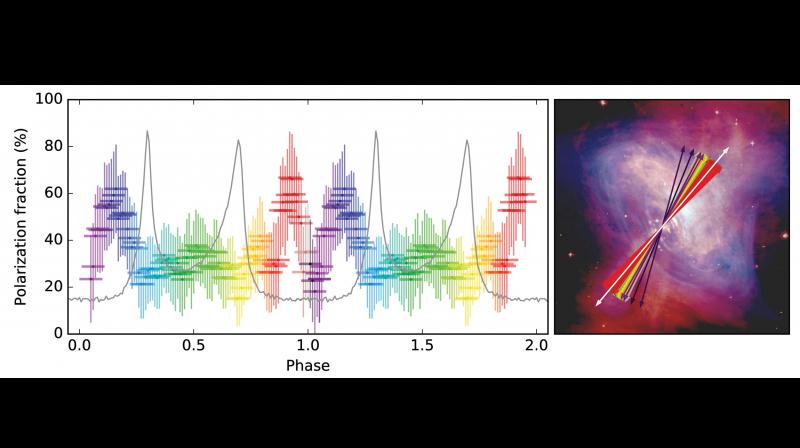Isro's multi-wavelength space telescope AstroSats' breakthrough discovery

CHENNAI: Isro’s multi-wavelength space telescope AstroSat has made a breakthrough discovery in X-ray emission while helping the Indian scientists to solve one of the puzzles in astronomy that is to measure the elusive properties of high energy X-rays. These properties of high energy X-rays can throw more light on their sources which include neutron stars (pulsars) and black holes. In a paper published in ‘Nature Astronomy’, a team of scientists has documented the results of their study of the Crab pulsar in the Taurus constellation.
Using data from the CZT Imager instrument of the AstroSat, the scientists have performed the most sensitive measurement of X-ray polarisation of the Crab pulsar, the rotating pulsar which is the main energy source of the nebula. The measurements have for the first time enabled the study of polarization at different rotation phases of the pulsar. It has revealed the strange polarisation of Crab Pulsar which challenges the prevailing theories of high energy X-ray emission from pulsars. “This new paradigm can throw new light on our understanding of pulsars. This is fully an Indian discovery involving Indian scientists and telescopes,” said Professor Santosh Vadawale of Physics Research Laboratory, Ahmedabad and the lead author of this paper.
“Current theories say all emissions are coming from inside the light cylinder. But, these results suggest that it cannot come from inside, so it has to come from outside. So, that new theoretical understanding of pulsars has to be developed,” he added. “In X-ray polarisation, we observed the emissions even when the beams are not pointing towards us which also known as off pulse duration,” Professor Dipankar Bhattacharya of IUCAA, Pune, and co-author of this paper told Deccan Chronicle. He gave an example of the lighthouse to explain the discovery. ““Like a lighthouse, it was believed, the rotating pulsars emit radiation when the beams are pointing towards us. But, in our X-ray polarization we have discovered that the Crab Pulsar emit radiation even beams not pointing towards us,” he explained.
This discovery potentially redefines the concept of how pulsars emitting the X-rays. X-ray polarisation measurement is very difficult and so far the only reliable measurement obtained worldwide is for the pulsar in the Crab Nebula – the ghostly remains of a massive stellar explosion known as the supernova, observed in 1054 AD. To get the micro-second accuracy required for combining the data, the AstroSat team sought help from radio telescopes – the Indian Giant Meterwave Radio Telescope (GMRT), at Khodad near Pune and Ooty Radio Telescope. The team monitored radio pulsations from Crab and meticulously corrected for all known anomalies. The scientists after spending several months on the data came up with the best measurements of Crab X-ray polarisation in the world.

